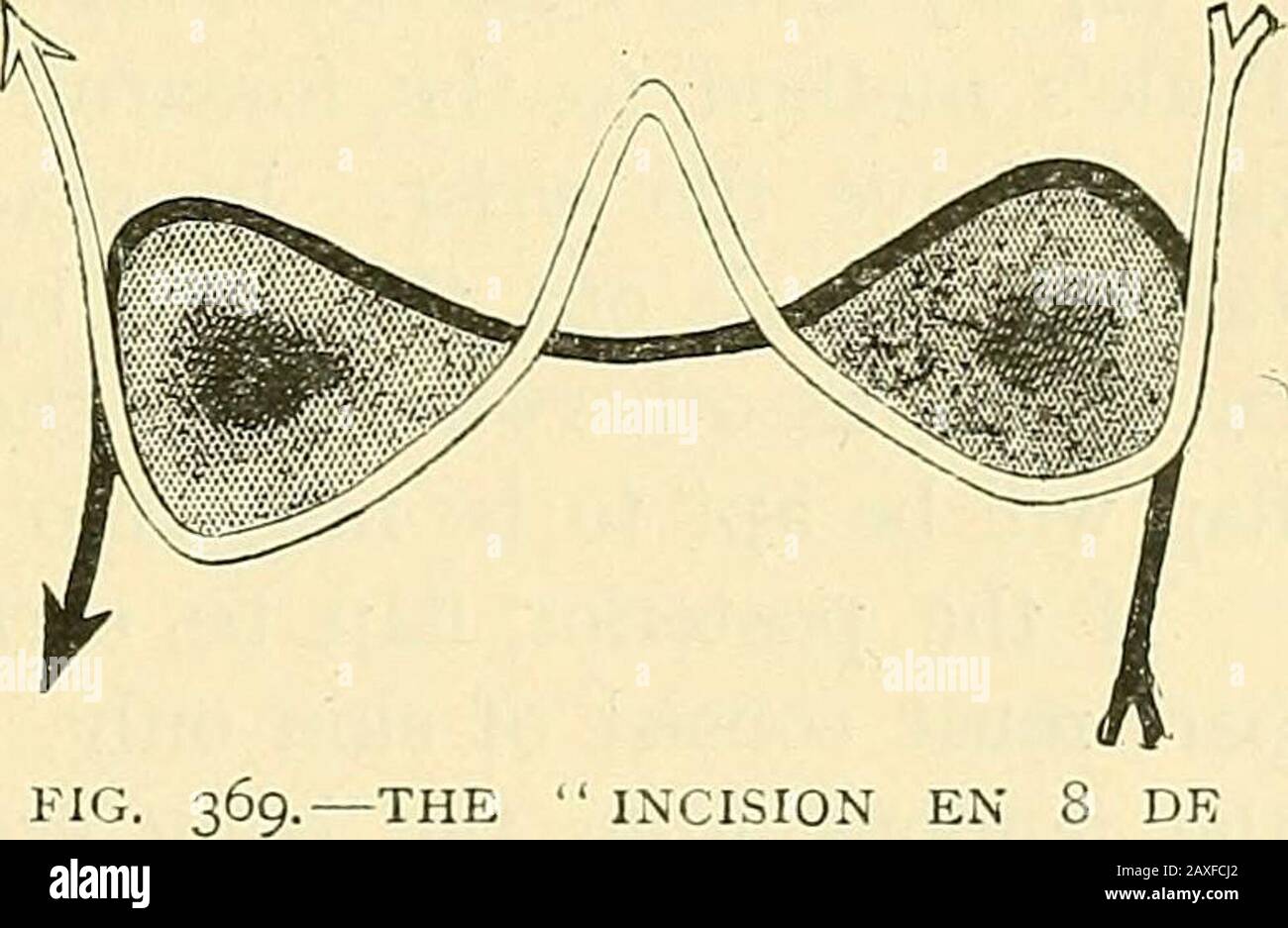A manual of operative surgery . lt to insinuate theknife behind the ulna, and itsmovements in that positionmust be assisted with the leftfingers. While the musculartissue is being divided, theassistant flexes the hand. Thetwo flaps are now drawn up tothe level of the saw-line, and the remaining soft parts aredivided at that level to clear fully the bones. This is effected by what the French surgeons call the in-cision en 8 de chiffre (Fig. 369). The knife is made to so pass-across the front and back of the limb as to follow the outlinesof the bones and to sever well the interosseous membrane.

Image details
Contributor:
The Reading Room / Alamy Stock PhotoImage ID:
2AXFCJ2File size:
7.2 MB (238.4 KB Compressed download)Releases:
Model - no | Property - noDo I need a release?Dimensions:
1958 x 1277 px | 33.2 x 21.6 cm | 13.1 x 8.5 inches | 150dpiMore information:
This image is a public domain image, which means either that copyright has expired in the image or the copyright holder has waived their copyright. Alamy charges you a fee for access to the high resolution copy of the image.
This image could have imperfections as it’s either historical or reportage.
A manual of operative surgery . lt to insinuate theknife behind the ulna, and itsmovements in that positionmust be assisted with the leftfingers. While the musculartissue is being divided, theassistant flexes the hand. Thetwo flaps are now drawn up tothe level of the saw-line, and the remaining soft parts aredivided at that level to clear fully the bones. This is effected by what the French surgeons call the in-cision en 8 de chiffre (Fig. 369). The knife is made to so pass-across the front and back of the limb as to follow the outlinesof the bones and to sever well the interosseous membrane. Thehand is kept supine, and both the anterior and posterior incisionsare made from left to right, and both are commenced by theheel of the knife and completed by its point. The threefold retractor having been applied, the bones aresawn in the manner already described. Some surgeons advise that the median, ulnar, and radialnerves should be resected from the anterior flap. Hemorrhage.—The radial artery will run the whole length. -THE INCISION ENCHIFFRE. The black and white arrows mark the courseof the knife. 524 AMPUTATIONS [part vi of the anterior flap, and be cut near its outer border on the innerside of the supinator longus. The radial nerve accompaniesit. The ulnar artery will be cut shorter, .will be in front of thebone, and between the flexor sublimis and flexor profundusdigitorum. The anterior interosseous vessels will be dividedimmediately in front of the interosseous membrane. Theposterior interosseous artery will be cut long, and will be foundbetween the superficial and deep muscles. The more conspicuous nerves form good guides to thedivided vessels. 3. Other Methods.—(1) By Long Anterior Flap.—This flap willmeasure in an adults forearm some four and a half inches in length.The posterior flap is one half the length of the anterior. They maybe cut in the manner just described. (2) By Long Posterior Flap.—This consists in the application ofTeales method to the for